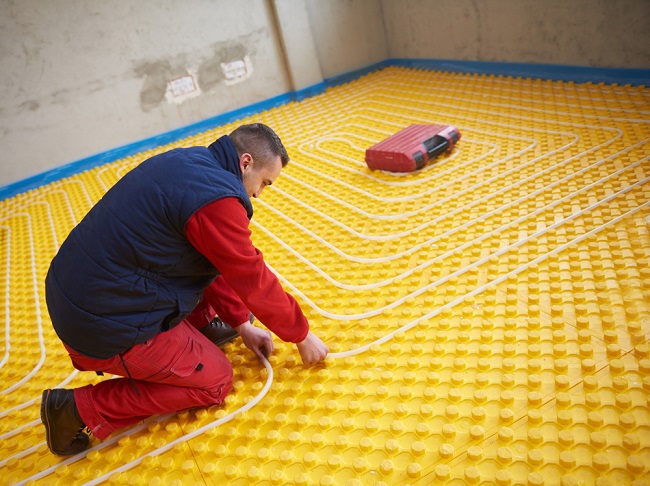What better than keeping our houses warm, cozy, and breezy than shivering and freezing? That’s where the hydronic heating comes into place. It makes your rooms warm and personifies a healthy environment in your surroundings. This innovative yet convenient system heats your bedrooms, living rooms, and even washrooms which would never make you feel extremely cold in winter too. The system of hydronic heating is safe, it gives better hot air quality inside the rooms, and the branches of pipe that go out from one central point distribute the hot air all throughout the rooms.

Integrating conduction, radiation, and convection in one go, hydronic heating has successfully made its way into becoming a household necessity as an efficient heating system.
What is hydronic heating?
Hydronic heating (also known as radiant heating) is based on the principle of heating water and transferring it to different sources in the house through an underneath piping system in the floors to produce heat. It uses a cost-effective way to keep rooms warm and to maintain a humid temperature all over. It is scientifically known that water is a good conductor to transmit heat rather than air. There is qual distribution of heat, and you can also get no toxic fumes and the right system can also be maintained in the most fashionable manner.
Hydronic heating is undoubtedly an invention that combines modern technology with smart home science.
How to install the hydronic heating system?
Hydronic heating is available with an easy installation process wherein the pipework is placed between the concrete slabs and adding a concrete layer over the top. There are several installations to be made like boiler units, thermostats, radiator panels, and in-slab in case of building a new floor. If you check the star rating and the overall energy efficiency of the system, you will understand how the network of pipes enhances the quality of air circulation inside the rooms.
Pros of Hydronic Heating system
- Levels heat distribution– Thermostats and control valves accompany maintaining a specific temperature as per the needs of the individual. It’s not quite hard to maintain different heat levels in the respective zones of use.
- Less noise– Hydronic heating occurs in a soundproof system wherein the boiling and heating processes happen with minimum. It also gives you the option to install the boiler outside the house for a no-noise system.
- Anti-allergen– Besides a noise-free environment, the heating equipment protects you from allergens like dust, pollen, contaminants, and pathogens, ensuring safe surroundings.
- Less electricity– Apart from electric heaters, hydronic heating works on a ductless arrangement with great energy efficiency and no heat consumption. For instance, lesser energy expenditure leads to low electricity bills.
- No filters– As long as there is no air present to filter at regular intervals, there is no need for any filters to change multiple times due to zero air expenditure.
- Humidity levels are maintained for a suitable temperature in the rooms by drawing out moisture from the closed liquid systems.
Cons of Hydronic Heating system
- Regular maintenance is expected.
- The speed of heat transfer is low compared to the whole travel time.
- It requires additional space for installation.
- It is a one-way process of heating but doesn’t provide any cooling feature thereafter.
- A time-consuming process, so preferable at a constant temperature.
- The fitting costs are high as compared to furnace heaters.
Conclusion:
Apart from residential homes, can install hydronic heating in various commercial and public spaces. You must know the basics of heating and cooling and incorporate the same for a suitable energy-saving purpose.
In short, the hydronic heater can be emphasized as safe, reliable, clean, comfortable, and efficient technology to rely on with sufficient, customizable, and apt benefits.




